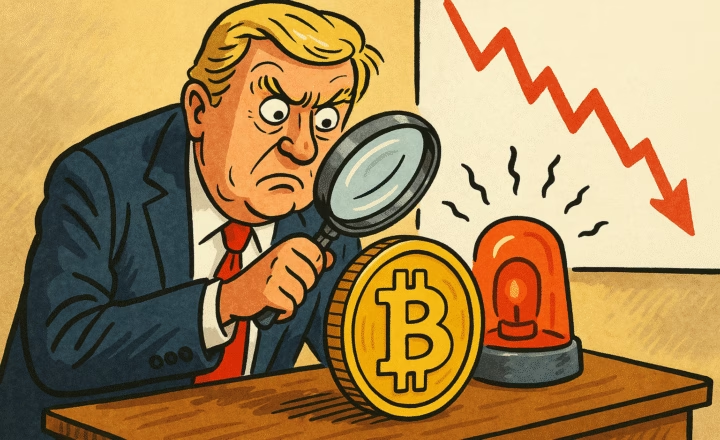Strategy’s Continued BTC Accumulation Pushes Corporate Holdings to Historic Highs
Strategy, the Bitcoin-centric enterprise led by co-founder Michael Saylor, is once again making headlines in the cryptocurrency world. In a recent social media post, Saylor hinted at another upcoming Bitcoin acquisition, extending the company’s uninterrupted streak of weekly purchases into its eighth week. With over 580,000 BTC now under management, Strategy has cemented its position as the world’s largest known corporate holder of Bitcoin, eclipsing even national governments in scale.
Unprecedented Growth in Strategy’s Bitcoin Holdings
According to data from SaylorTracker, Strategy’s Bitcoin investment has surged over 50% since its inception, generating unrealized gains exceeding $20 billion. The most recent purchase occurred on May 26, when the company acquired 4,020 BTC, worth approximately $427 million at the time of transaction. This acquisition raised Strategy’s total Bitcoin holdings to 580,250 BTC.
These figures not only position Strategy ahead of other corporate players but also place the company above the United States and China in terms of known Bitcoin reserves, based on data compiled by Bitcoin Treasuries. Analysts and investors increasingly view the firm as a de facto Bitcoin exchange-traded fund (ETF) substitute, especially in markets where such instruments are not yet available.
A Social Media Signal Sparks Market Interest
Michael Saylor, known for his bold and often symbolic social media activity, posted a chart of Bitcoin trading at $105,334 with the caption, “Orange is my preferred color.” The post, made to his 4.4 million followers on X (formerly Twitter), was widely interpreted as a signal of another imminent purchase.
Orange is my Preferred Color pic.twitter.com/rc9JIcJOAT
— Michael Saylor (@saylor) June 1, 2025
Saylor’s personal brand and Bitcoin evangelism have attracted considerable attention from both retail and institutional circles. His consistent messaging has turned Strategy into a public proxy for Bitcoin, and its stock performance often tracks the price of BTC closely.
Institutional Momentum and Potential Market Impact
The scale and consistency of Strategy’s purchases are influencing broader market behavior. CryptoQuant analyst Ki Young Ju noted that such sustained institutional demand may contribute to a liquidity crunch, tightening supply and exerting upward pressure on prices.
Executives at Sygnum Bank, a regulated crypto bank based in Switzerland, echoed this sentiment. They warned that ongoing corporate buying activity could trigger a supply shock — a scenario in which available Bitcoin becomes increasingly scarce, accelerating price movements.
This accumulation strategy has positioned Strategy as a bellwether for Bitcoin’s institutional adoption. Market participants often interpret the company’s purchasing trends as a broader indicator of growing corporate confidence in digital assets.
Transparency Concerns Emerge Over BTC Holdings
Despite Strategy’s prominent role in the crypto ecosystem, questions remain about the transparency of its Bitcoin reserves. Unlike some exchanges and custodians that regularly publish cryptographic proof of reserves, Strategy has not provided similar verifiable data.
Skeptics have voiced concerns on social media, challenging the company’s refusal to offer public proof of holdings. One user responded directly to Saylor’s recent post, stating: “No proof of reserves is your preferred ‘trust me bro.’ When mempool? Or too scared to show that you do not have Bitcoin, but instead paper Bitcoin?”
These criticisms reflect a growing demand within the cryptocurrency community for corporate accountability and auditable evidence of asset holdings — especially from high-profile entities that can influence market sentiment.
Saylor’s Defense and the Risk of On-Chain Exposure
In response to such concerns, Saylor has argued that proof-of-reserve audits are not suitable for large institutions. He claims that disclosing wallet addresses or on-chain activity could expose the company to unnecessary risks, including unwanted tracking or targeted cyber threats.
This position highlights the tension between blockchain’s core principles of transparency and the operational realities faced by institutional players. While the open nature of public blockchains allows for unprecedented visibility, it also introduces privacy and security challenges for entities managing large reserves.
Other institutional participants have echoed these concerns, noting that the benefits of transparency must be carefully weighed against potential vulnerabilities. For companies managing billions of dollars in digital assets, operational discretion remains a key priority.
Balancing Market Trust and Institutional Norms
Supporters of Strategy argue that the company’s regular disclosures through SEC filings and earnings calls provide sufficient transparency by traditional financial standards. They contend that while the firm may not meet crypto-native expectations for on-chain proof, it does adhere to existing regulatory norms.
Nevertheless, the ongoing debate over proof of reserves speaks to a larger ideological divide. For some, transparency and decentralization are non-negotiable values within the crypto ethos. For others, integrating blockchain into corporate finance requires a pragmatic approach that balances innovation with risk management.
Conclusion
Strategy’s relentless acquisition of Bitcoin continues to reshape perceptions of digital assets in the institutional world. With over half a million BTC in its treasury and an unwavering commitment to long-term accumulation, the company remains a central force in the evolving relationship between traditional finance and the cryptocurrency market.
Yet as its influence grows, so too does scrutiny. The company’s stance on proof of reserves is likely to remain a contentious issue as more stakeholders demand clarity and accountability from major players in the space.
In the meantime, all eyes are on Strategy and its next move — one that could once again move markets and deepen the conversation about transparency, trust, and the future of corporate crypto adoption.












